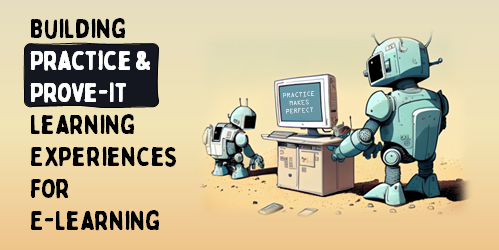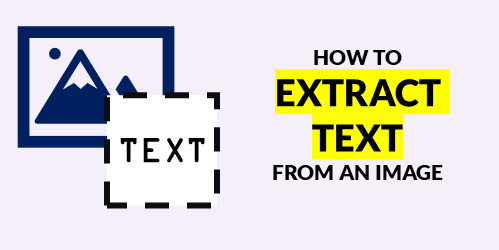Three Ways to Deal with Learners Who Skip the Content & Go to the Quiz
January 31st, 2023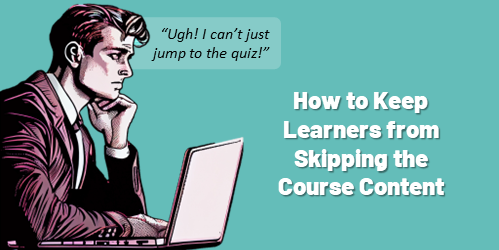
Like many of you, I’m not a big fan of meetings because most of them tend to be presentations. The entire time I’m thinking, “Why didn’t they just record a presentation and send that out rather than have a bunch of people sit in a meeting with no expectations or action items? Seems like a big waste of time.”
We’ve all been in those meetings. And we don’t like them. Why?
Because while on the surface the purpose of the meeting seems meaningful, for most attendees the meetings are largely irrelevant with lots of “need to know” but not enough “need to do.”
Take that same emotion and apply it to typical e-learning courses, especially annual compliance and certification training. Most of those courses have what appears to be valuable content, but for the learner, the course is a lot of “need to know” but very little “need to do.”
And that’s why people click through the course at rapid speed and try to get to the quiz as fast as possible.
This is why we see so many questions on how to lock the navigation, because course owners know people aren’t going to sit through that boring, irrelevant content.
In an ideal world, the course is structured so it’s meaningful and relevant and the best learning experience possible. But that’s probably not going to happen, especially not with most compliance training.
That’s OK. The reality is that most of those courses are mandatory and there’s not much we can do. However, instead of fighting this, let’s look at a few simple ways to make these courses better.
Quiz Tip #1: Provide a Pre-Test
Don’t fight skipping to the quiz. Instead, put it up front. Give the learners who know the content the opportunity to prove it upfront.
If they can pass the quiz, then they demonstrate they know the content (or at least to the level that you’re quizzing). Pass the quiz, get credit for completion. Don’t pass the quiz, go to page 1 of the course.
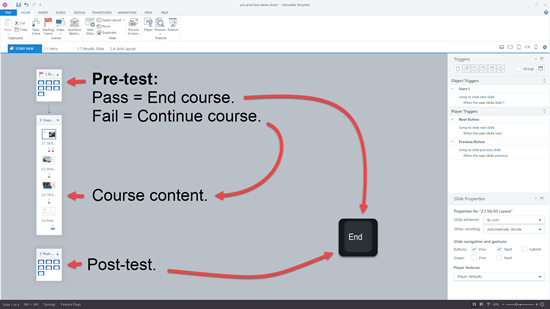
Click here to view the example quiz.
Quiz Tip #2: Create Pressure to Review the Content
Ask questions in the quiz where you suspect they’re probably skipping. Don’t ask trick questions, but essential questions that cover the core content. When they’re not sure how to answer, they’ll go look it up.
In the screenshot below, odds are that the person isn’t familiar with RCW and all of the answers are viable, so they’re probably forced to go look up the answer to the question rather than risk missing it.
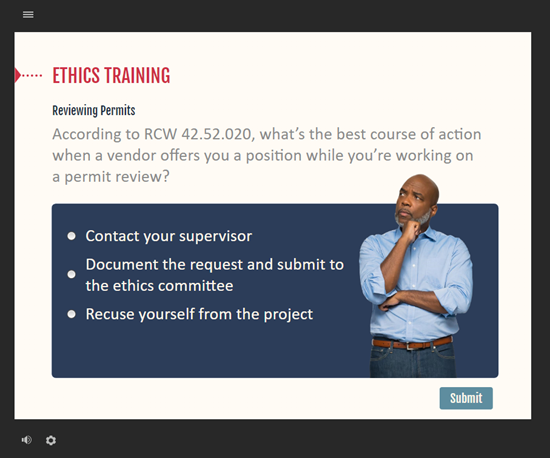
I can guarantee you, as they’re asked something very specific that they don’t know, they’ll jump right into the content to look for it. And then you’ll have them in the course, learning what they need to know to pass the quiz.
Quiz Tip #3: Make the Quiz the Course
Don’t start with slide after slide of content. Instead start with the first quiz question. And then regardless of how they answer, provide the core content.
You can’t insert fifty slides of content. So, as the course author, it forces you to determine the core content that you want them to know and then create the appropriate question to assess that knowledge.
Bonus tip: you can also make it more engaging by setting up the questions like a scenario rather than basic quiz questions.
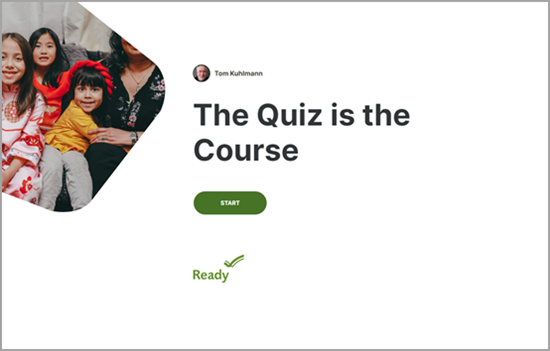
Click here to view sample quiz.
There’s a reason people jump the content and go to the quiz. In an ideal world, the course is meaningful and relevant to what they need to learn. That’s probably enough to keep them in the course. However, if you do find they’re skipping the content, above are three good alternatives to try.
Events
- Everyday. Check out the weekly training webinars to learn more about Rise, Storyline, and instructional design.
Free E-Learning Resources
 |
 |
 |
|
Want to learn more? Check out these articles and free resources in the community. |
Here’s a great job board for e-learning, instructional design, and training jobs |
Participate in the weekly e-learning challenges to sharpen your skills |
 |
 |
 |
|
Get your free PowerPoint templates and free graphics & stock images. |
Lots of cool e-learning examples to check out and find inspiration. |
Getting Started? This e-learning 101 series and the free e-books will help. |


